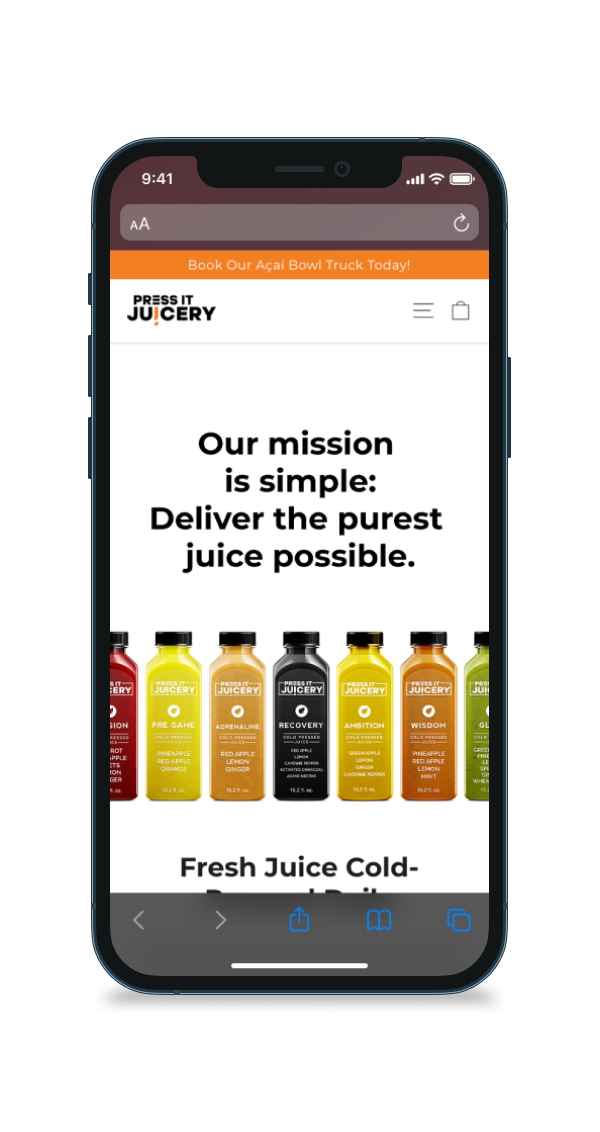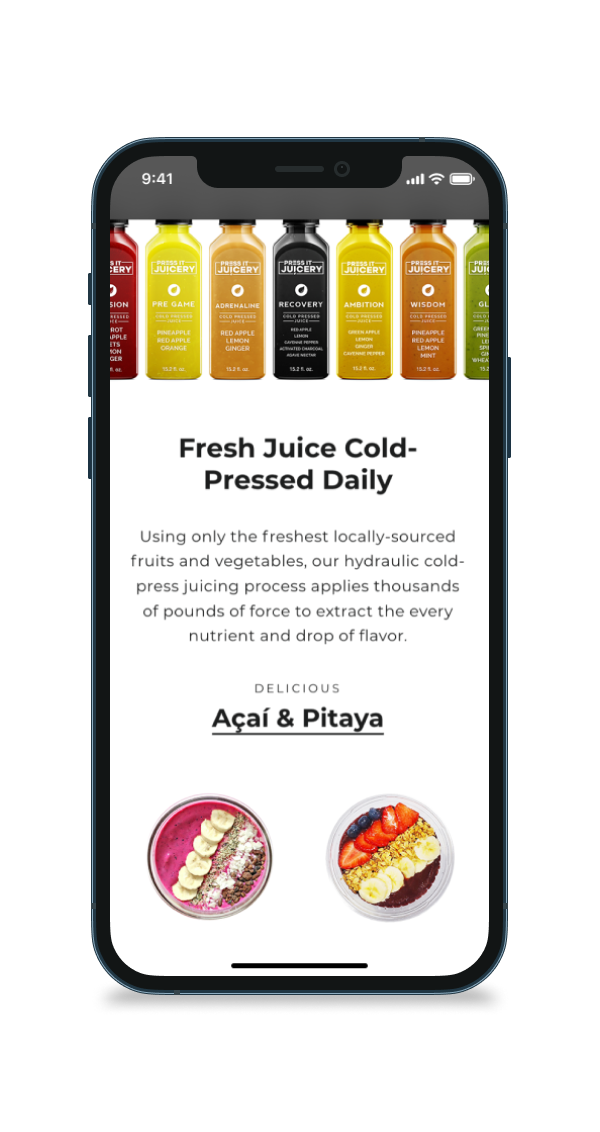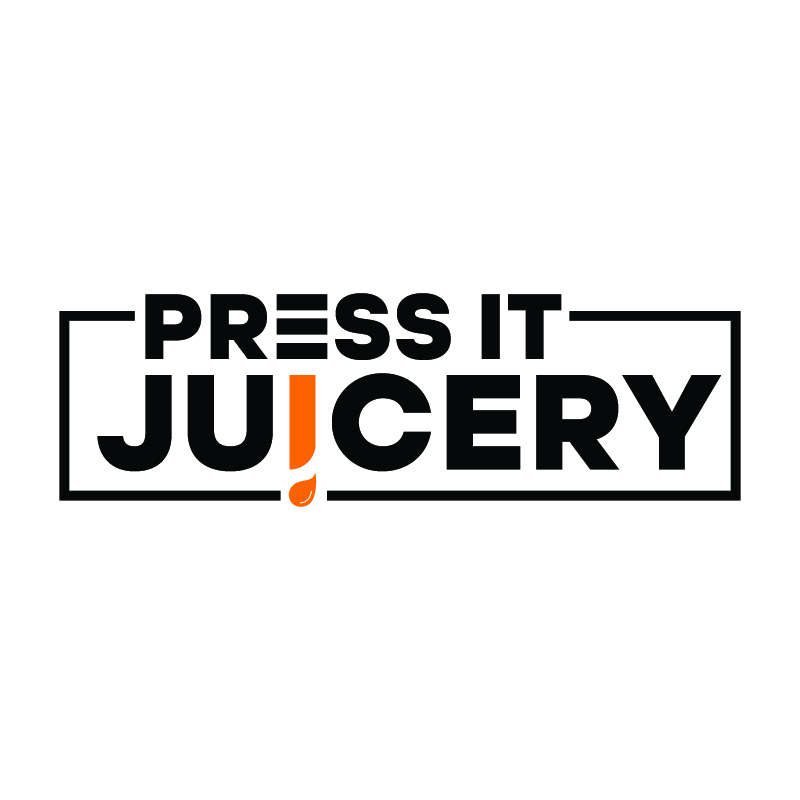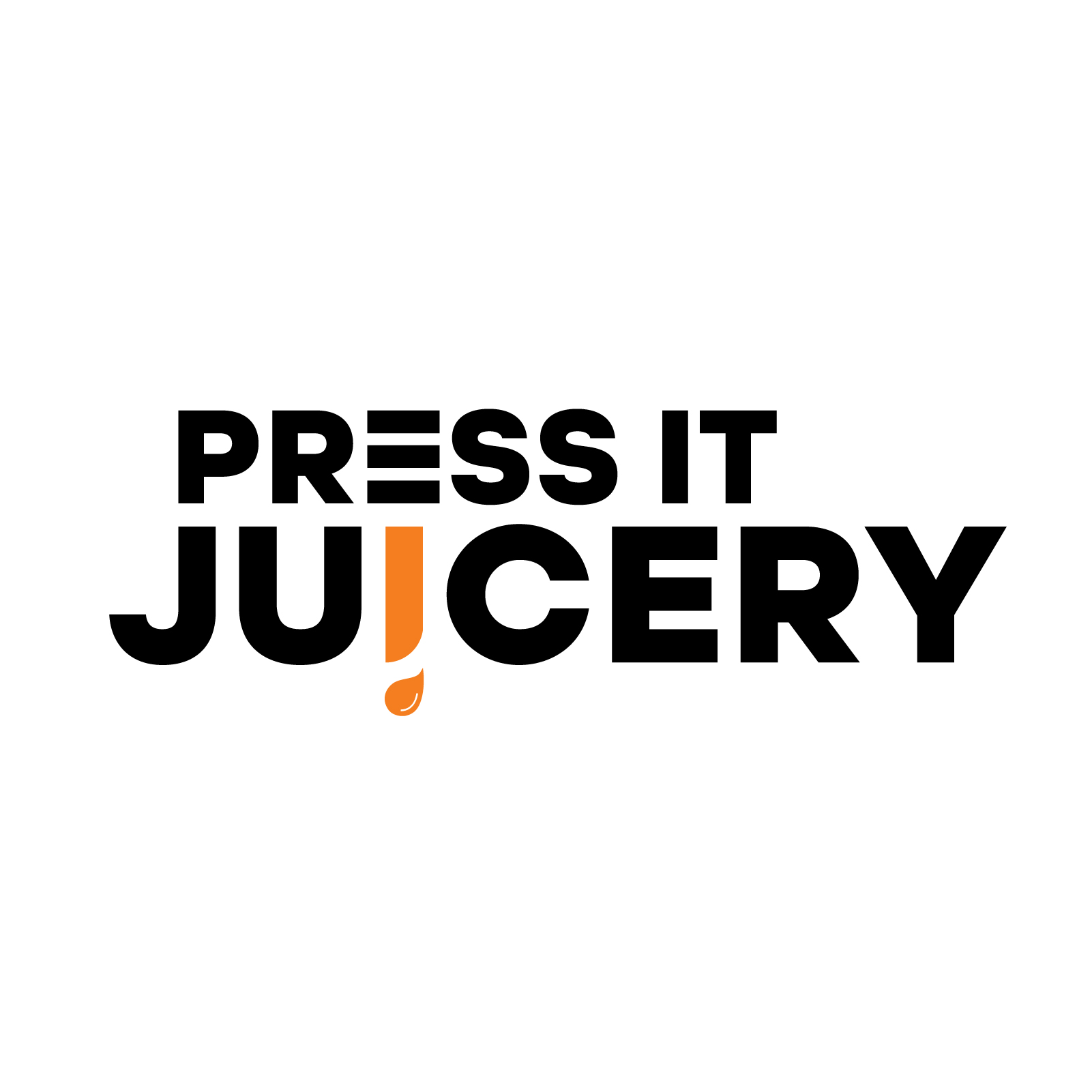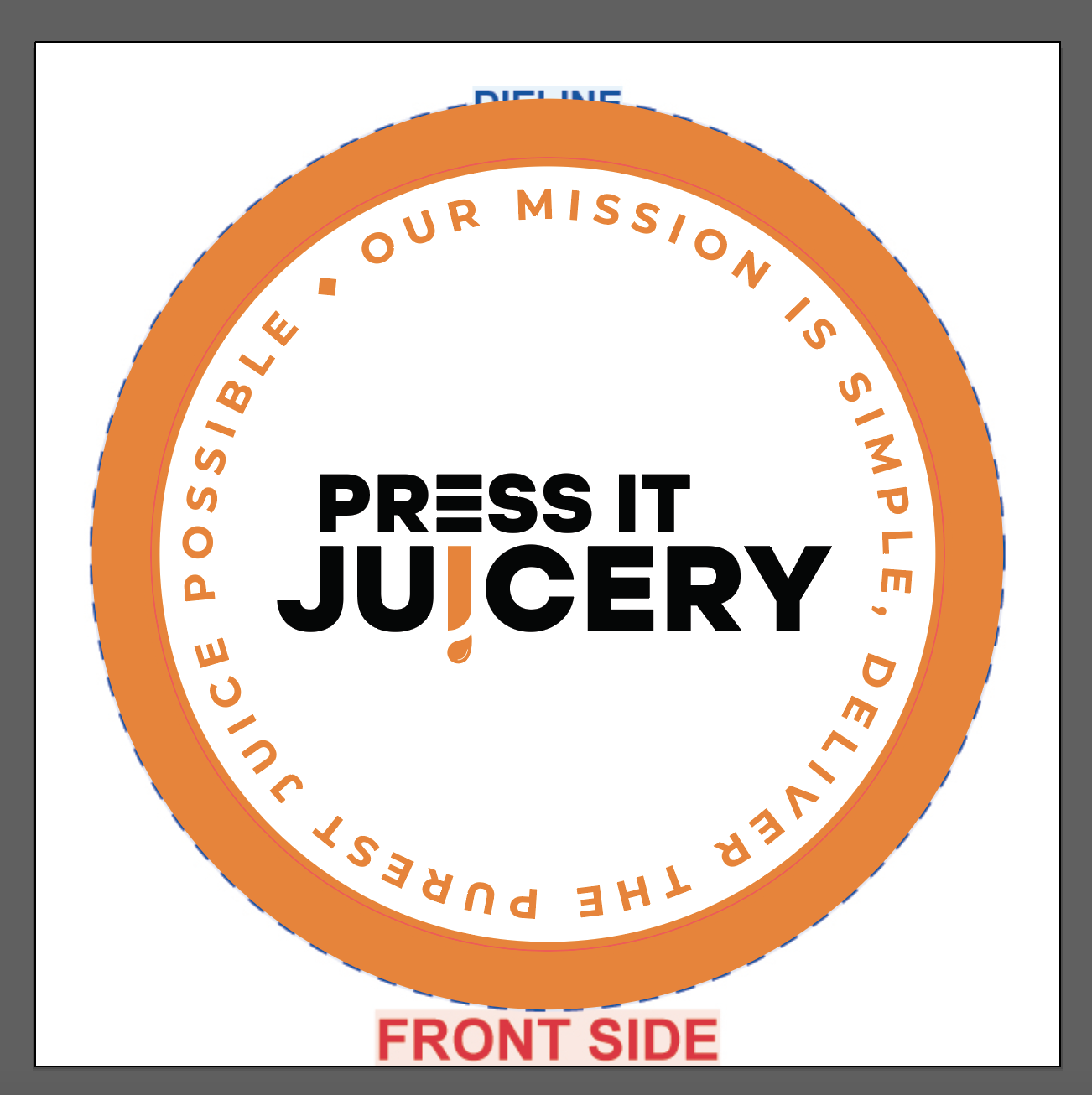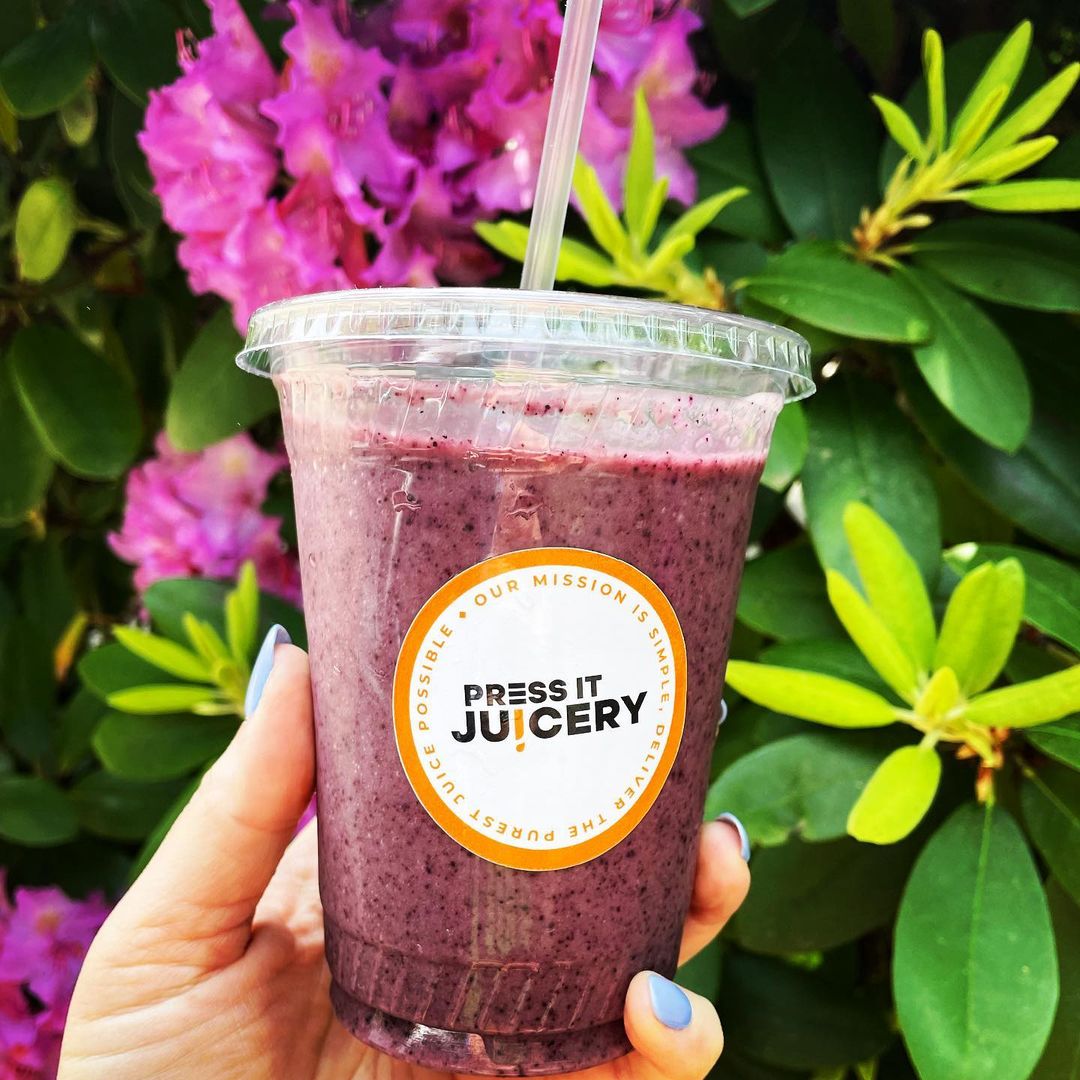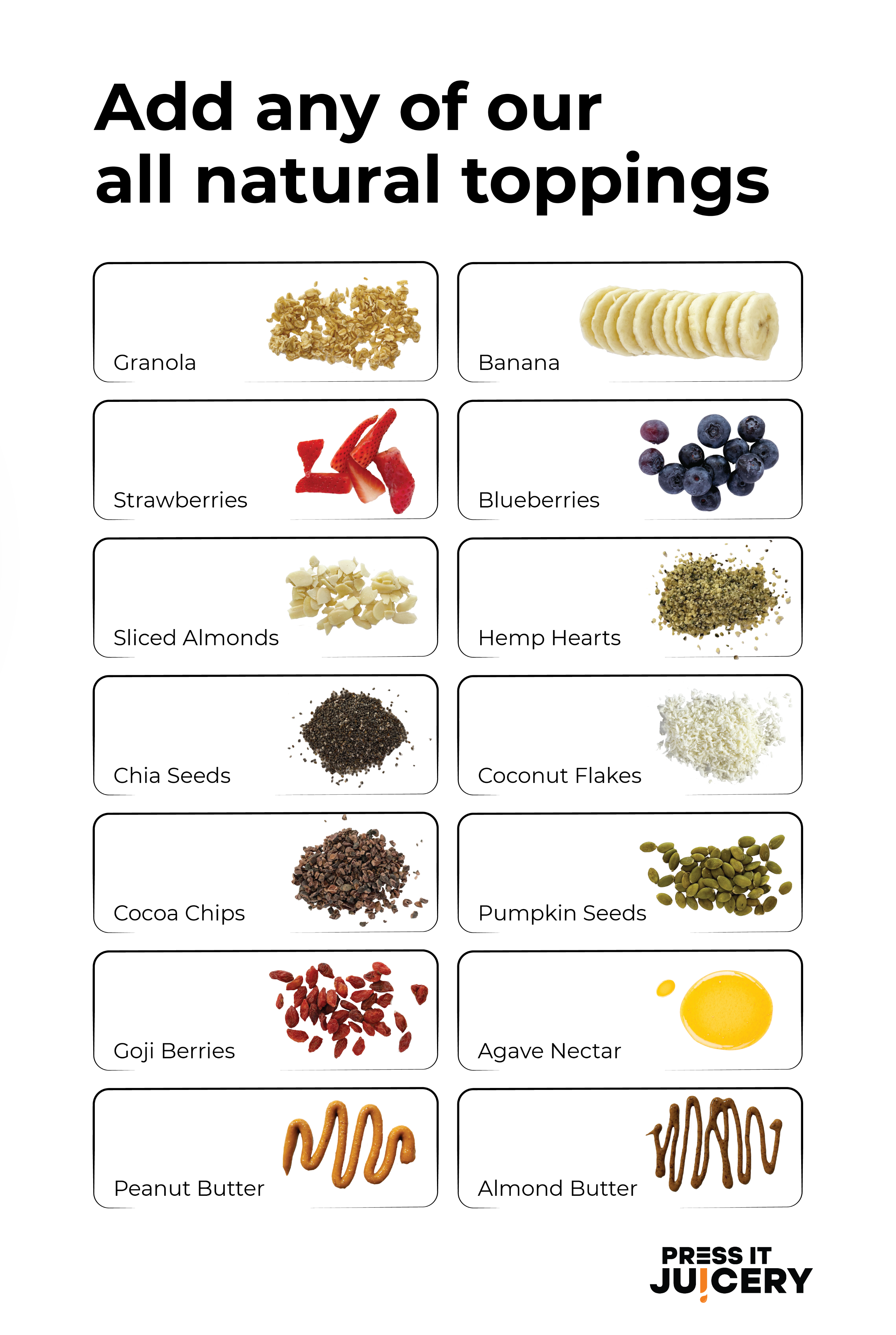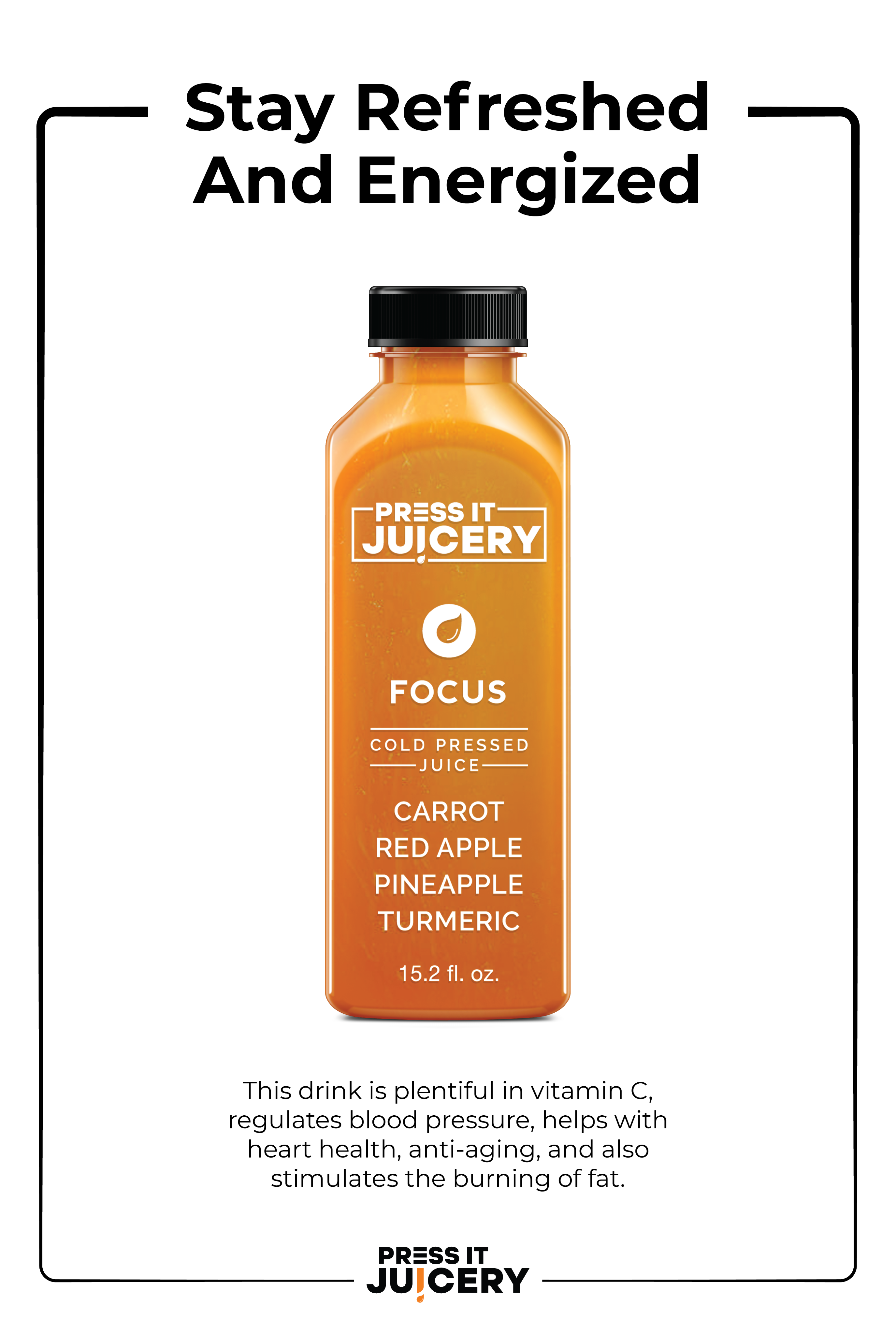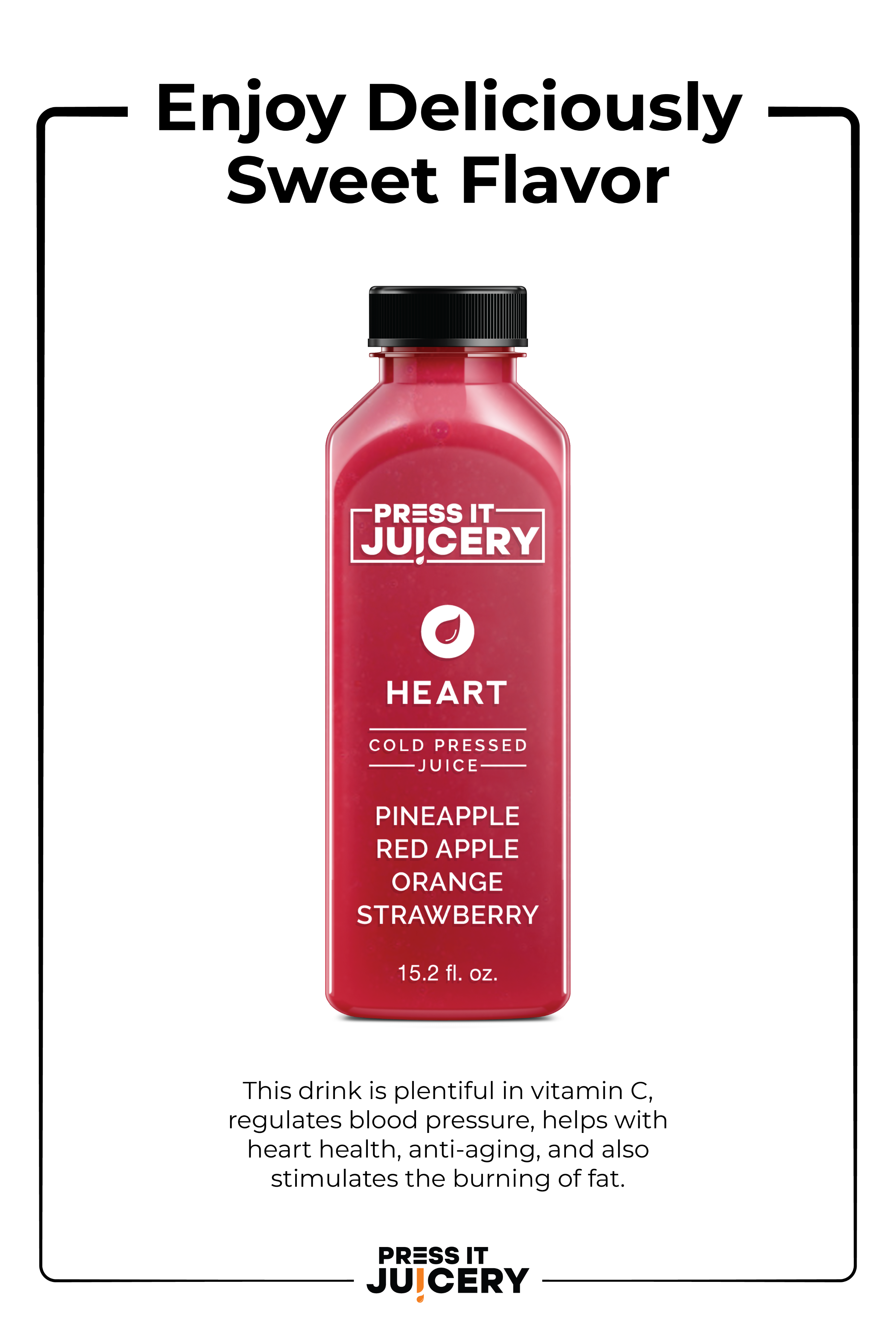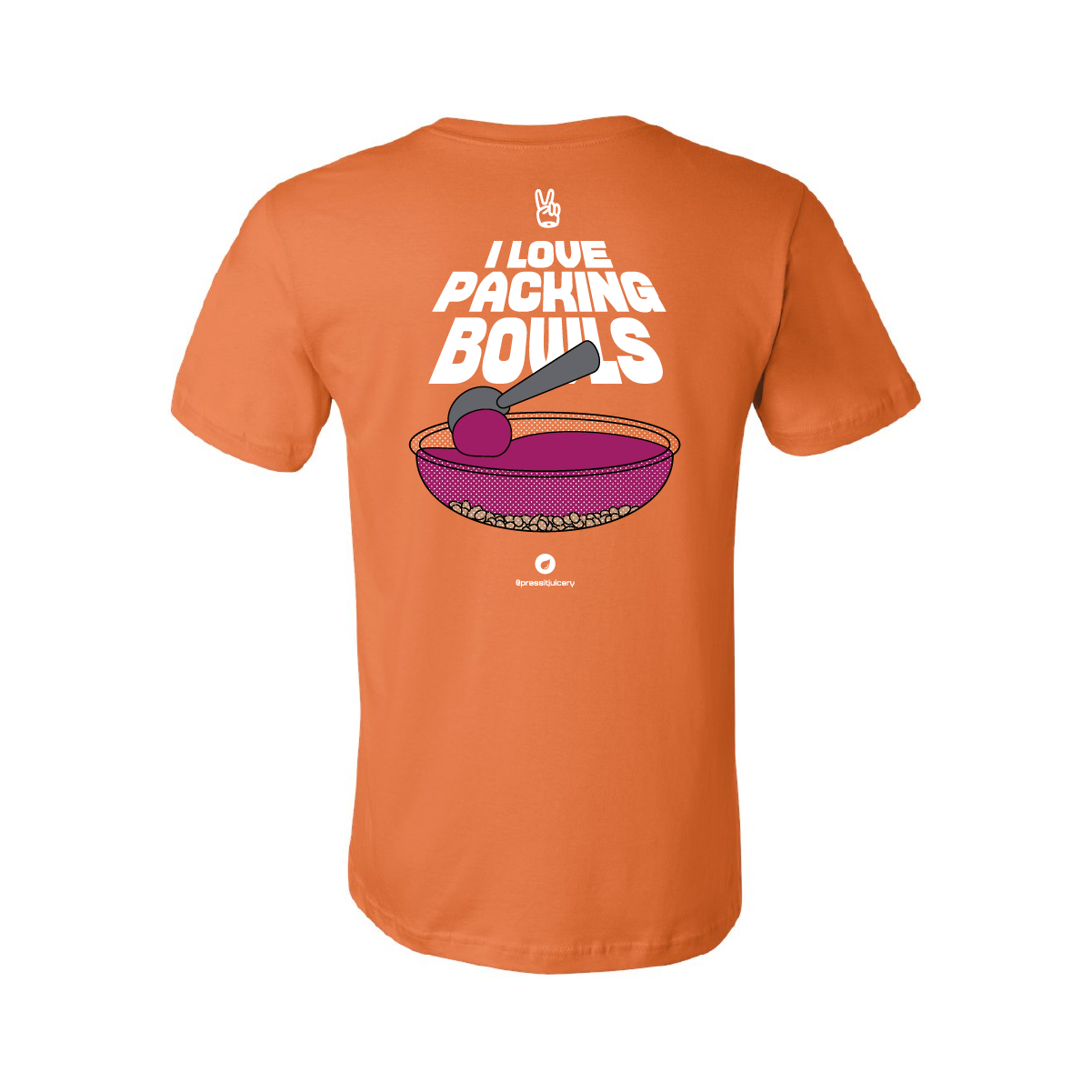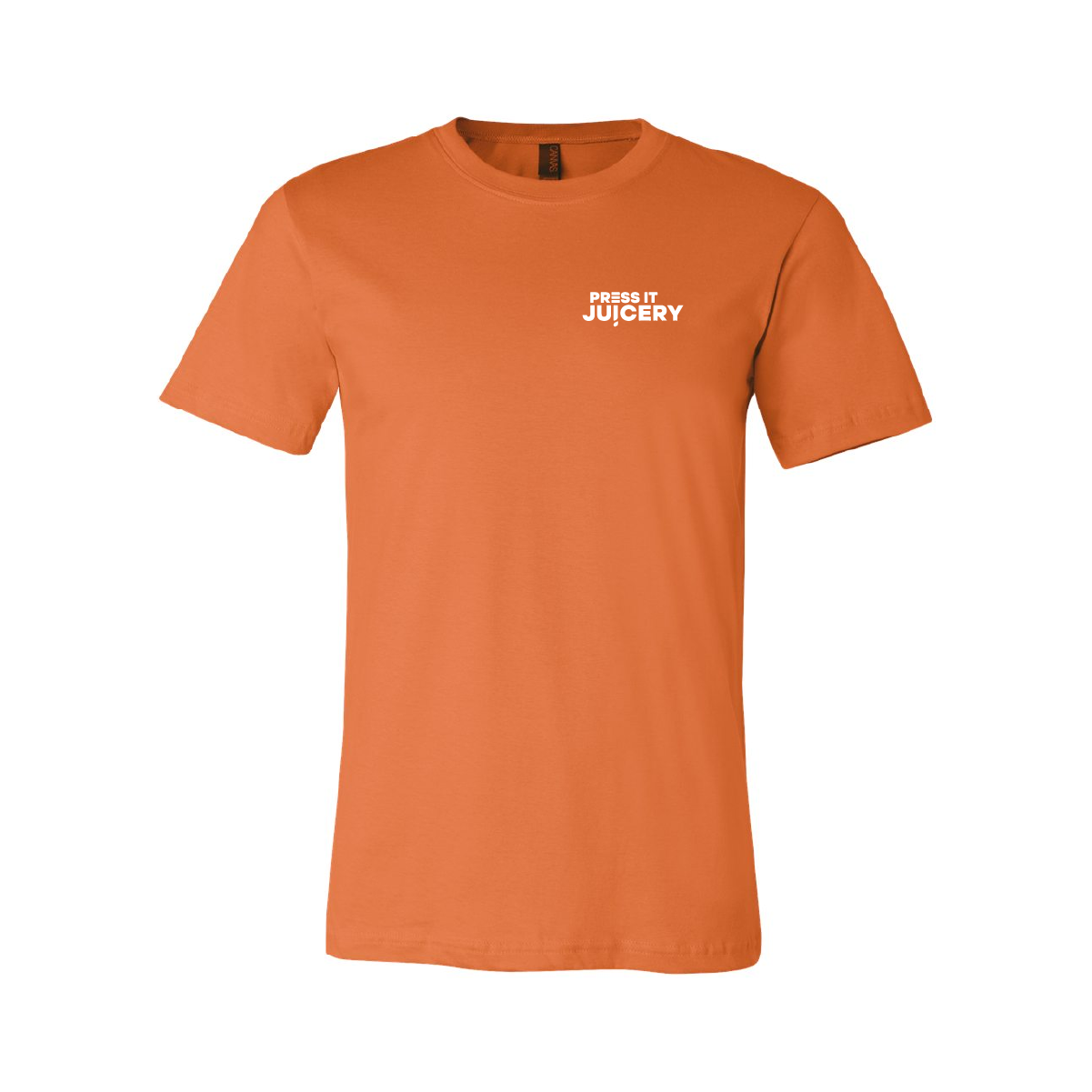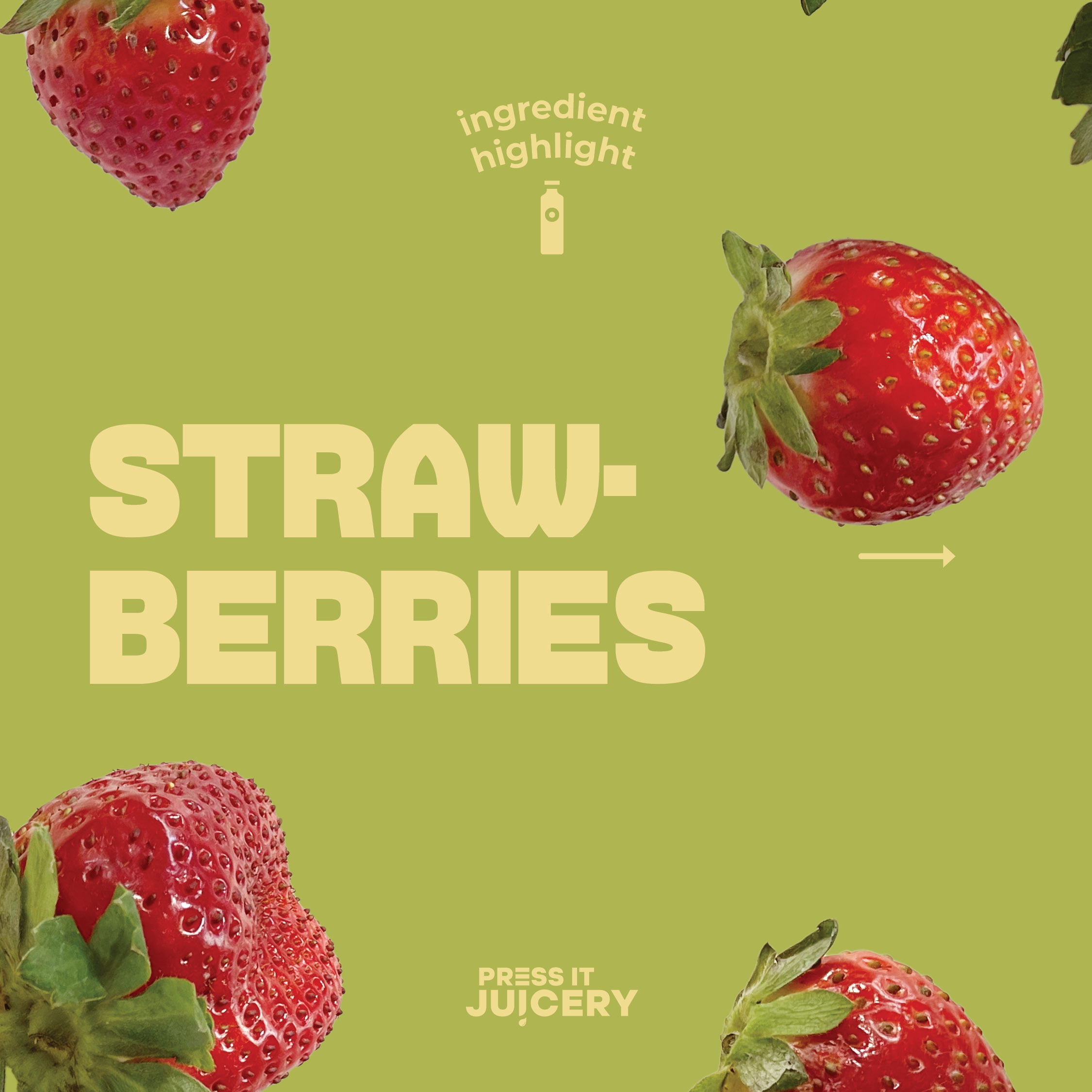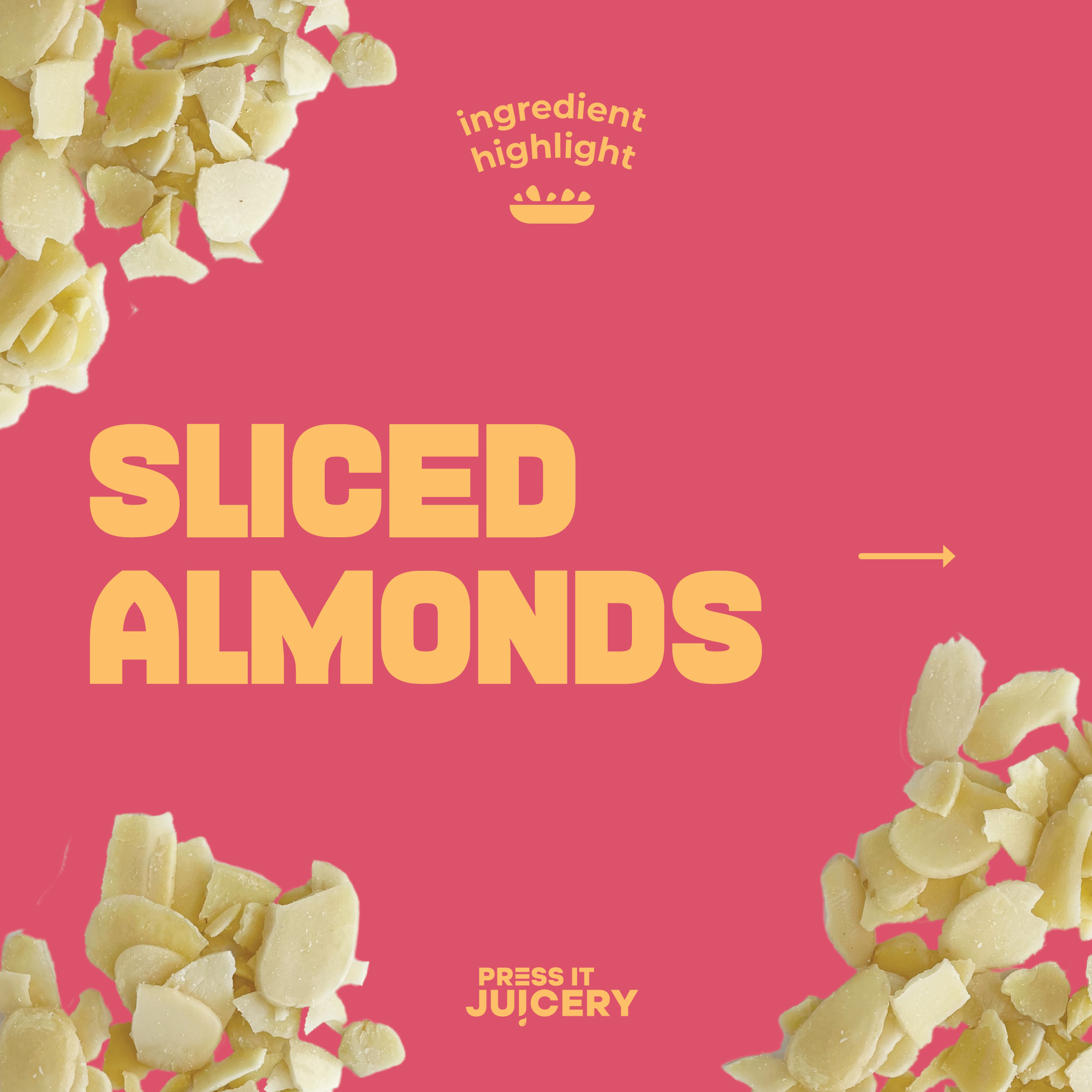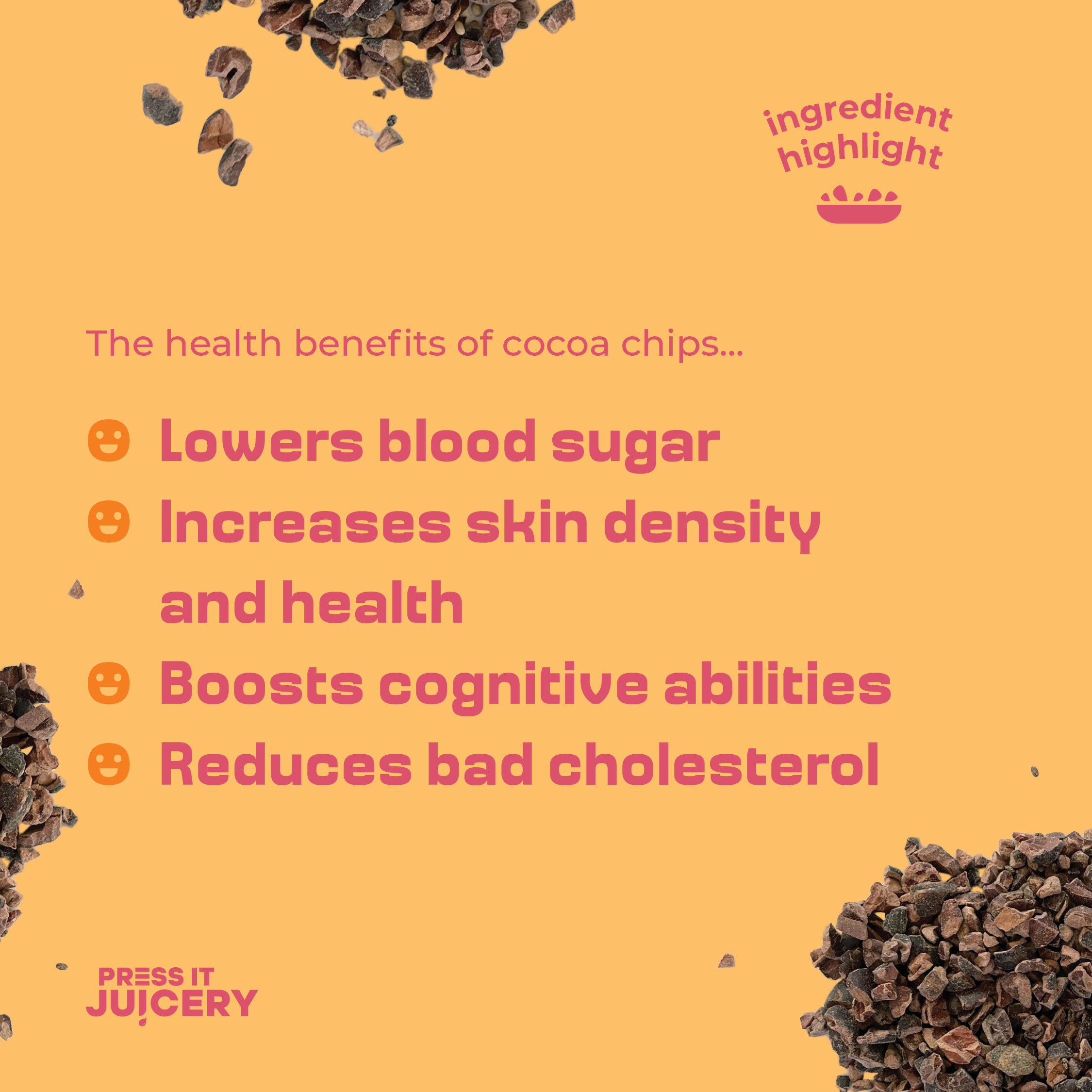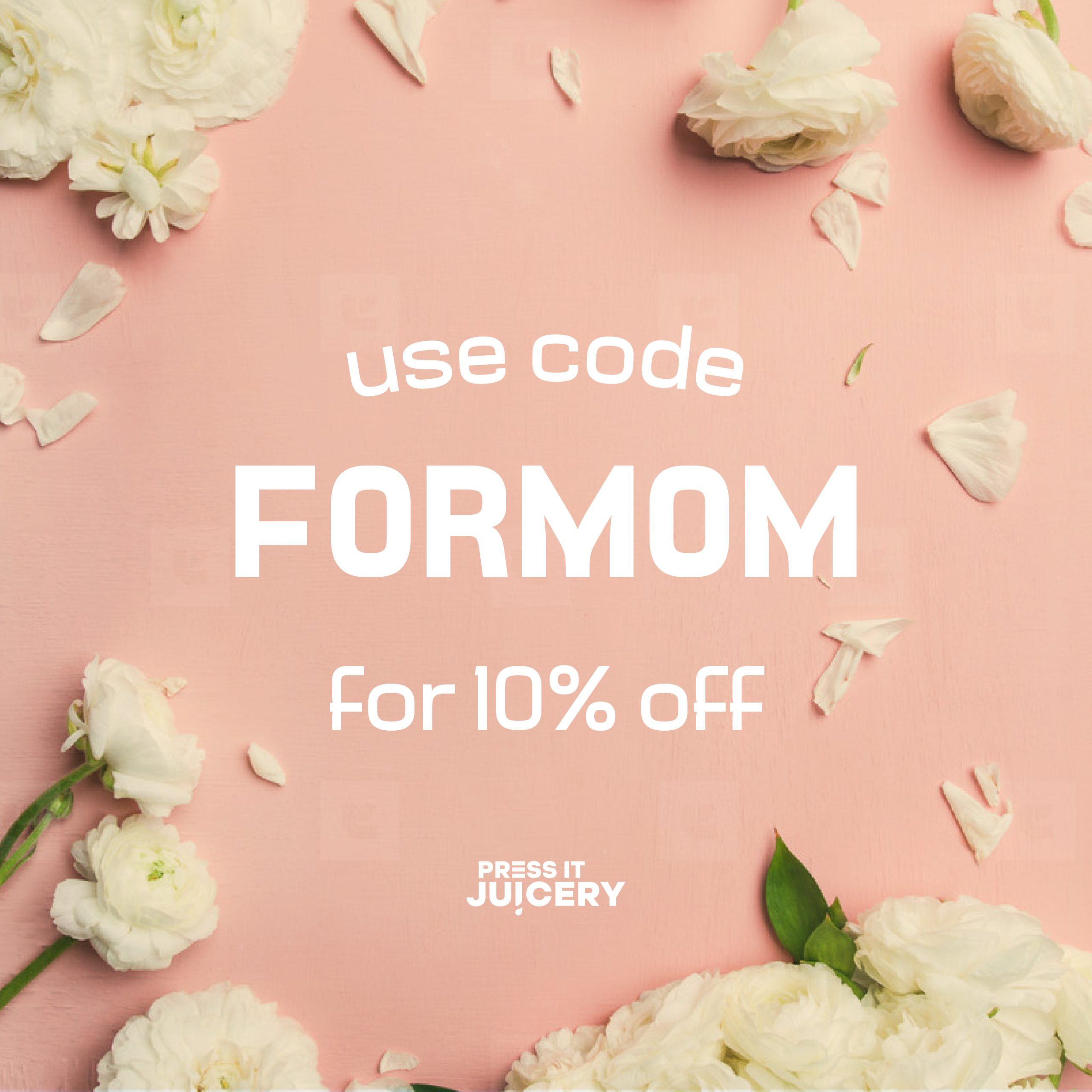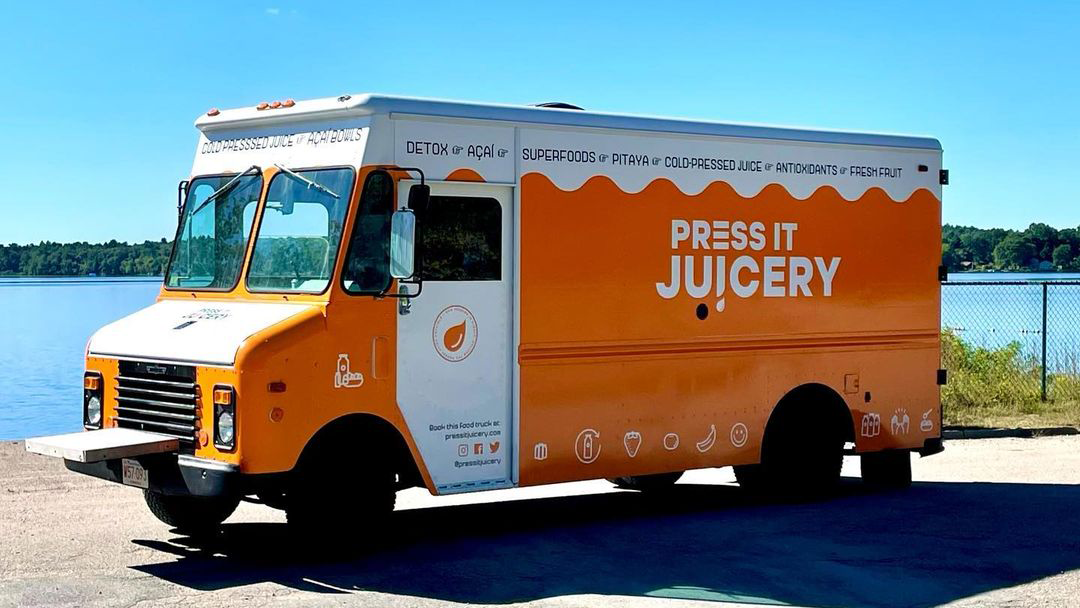
Overview
To be candid, articulating my experience working with Press It Juicery proves to be quite a challenge, given the breadth and depth of what transpired. Attempting to encapsulate it all in writing feels akin to trying to contain an ocean within a thimble. Nevertheless, I've tried my best to distill the essence of my time into manageable segments. TLDR: You can just flip through these Brand Guidelines I compiled when I finished up working with Press It Juicery.
Update
As of November 2022, Press it Juicery is permanently closed. Instagram Annoucement
Background
How it Started
When I picked up the job at Press It Juicery, I had no idea it would turn into a graphic design gig. The timing was significant, coinciding with the peak of the pandemic when the business was struggling. The juicery's monthly revenue, hovering around $4000, faced a financial challenge familiar to many in retail during this time. Amidst this modest income, issues like irregular opening hours added strain, leaving owner Josh to confront the real possibility of closure. He needed someone to press fresh juices in the morning and serve acai bowls during the day, and that is where I started.
Noticing Some Things
Since summer break had just begun, I was looking to save up some money, so I started learning how to scoop açaí bowls and run the juice press right away. I was working Monday through Saturday, 5:30 am to 4:30 pm. After pressing juices and running the store for about two weeks or so, I realized that due to the COVID safety protocols, all of the orders were coming in from the dated online website. On my own time after work, I decided to help the owner out by updating the color palette and styling that was being used throughout the website.
Website Redesign
The Old Website
Josh told me the aesthetic the website was going for originally was: "Gritty, industrial, barbells and steel. Pumping iron and bodyweight exercises in an abandoned warehouse type of feeling." He wanted to make juices and the cleanse programs appeal to the fitness crowd.
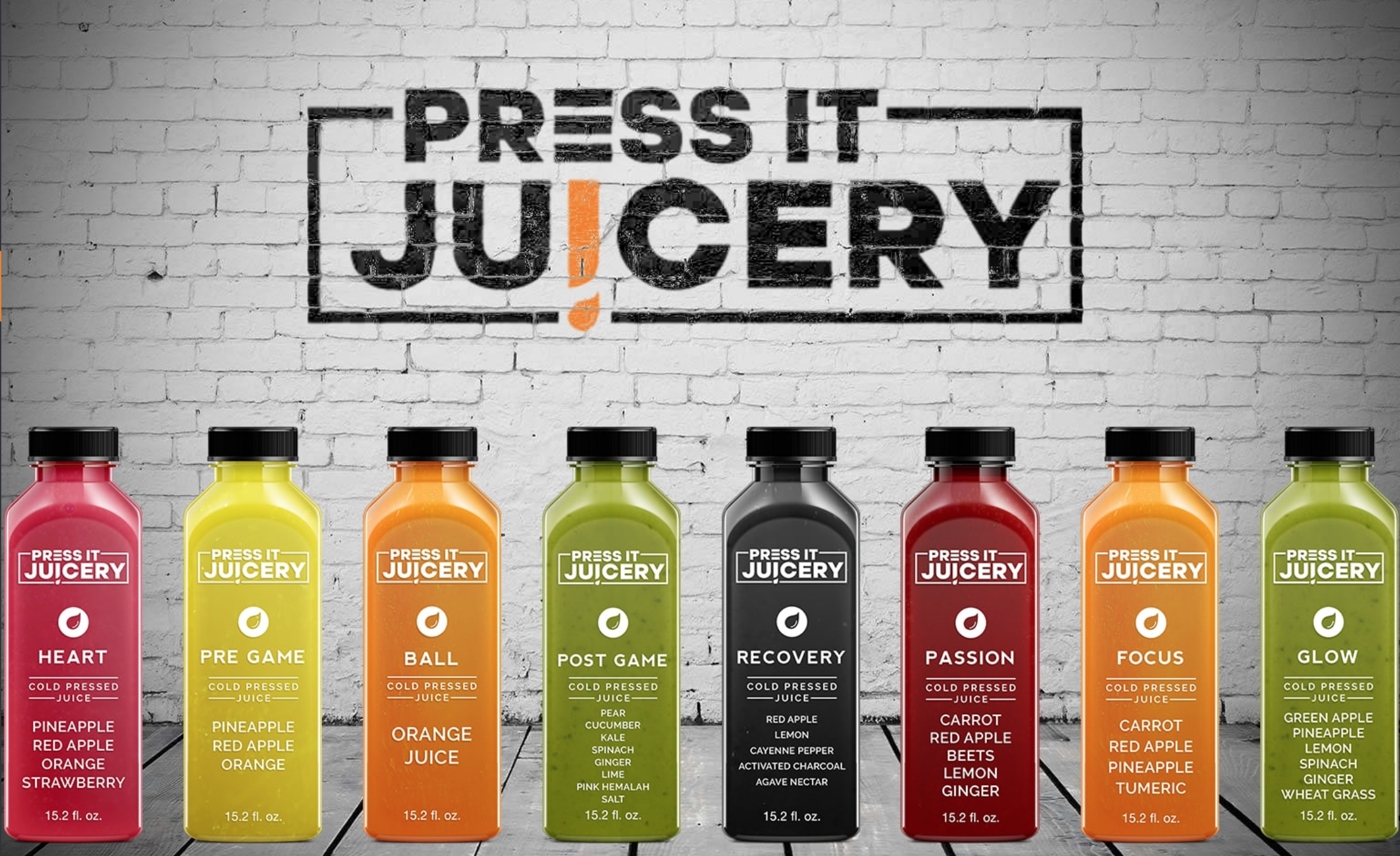
Reworking the Shopify Theme
Press It Juicery was running his online sales off of Shopify. The theme that was installed had ample functionality for a solid webstore. It just had to be restyled a bit. I noticed through my time working there that the customer base was mostly the health food crowd, not necessarily fitness enthusiasts. I thought that moving away from the original aesthetic would help Press It Juicery appeal to a broader, more on target audience. They had a cool slogan that I really liked: "Our mission is simple: deliver the purest juices possible." To stick with this theme of purity, and highlight the vibrant colors of the juices, I removed the gritty background elements, and replaced it with a simple minimalistic white.
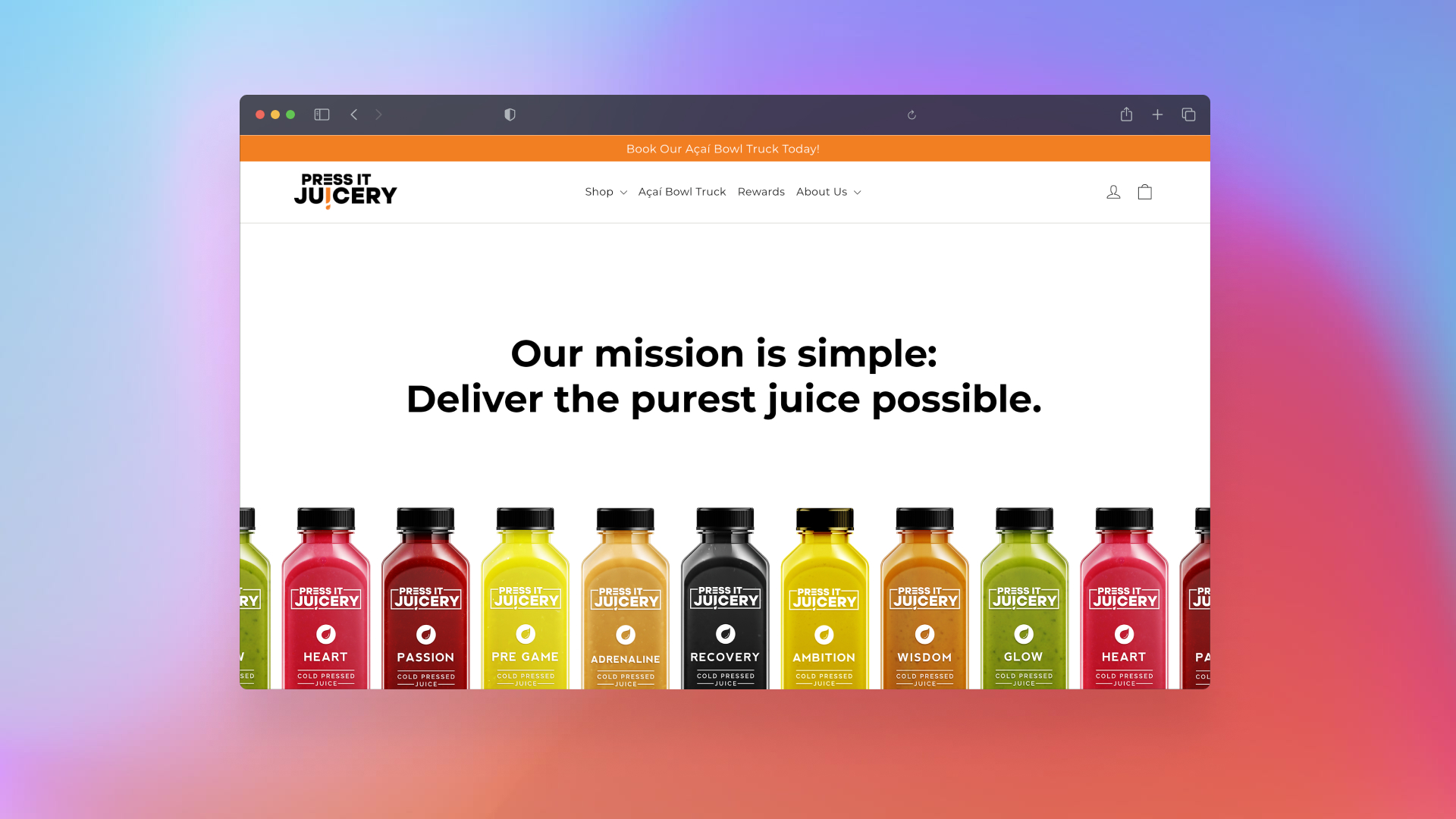
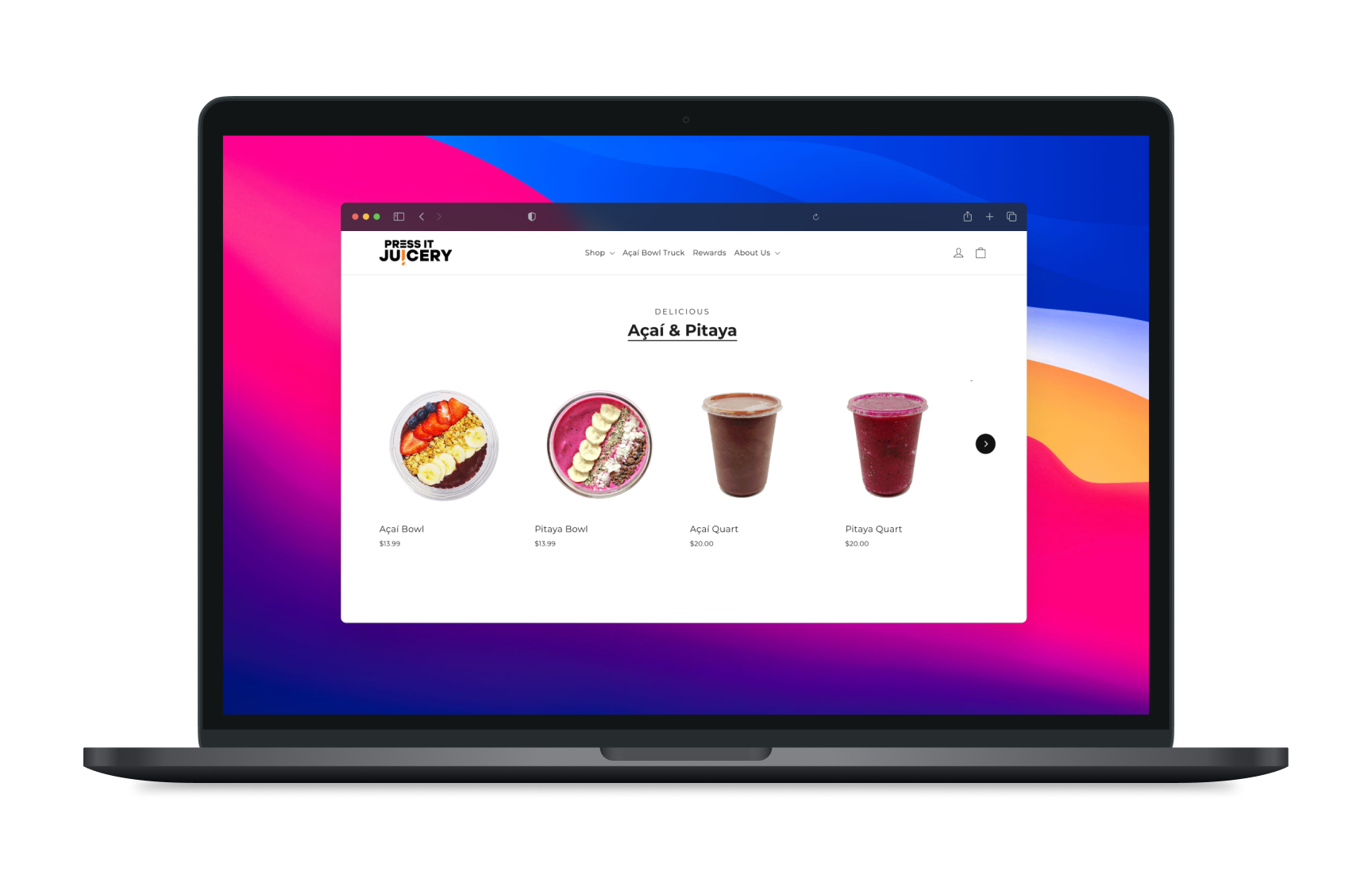
Updating Brand Strategy
New Brand Assets/Guidelines
Because of how I started this project, the design process was not very structured and sort of go with the flow. As I was working on the website, I simplified the type heiarchy. I changed the typefaces from Impact and Inter to Montserrat throughout.
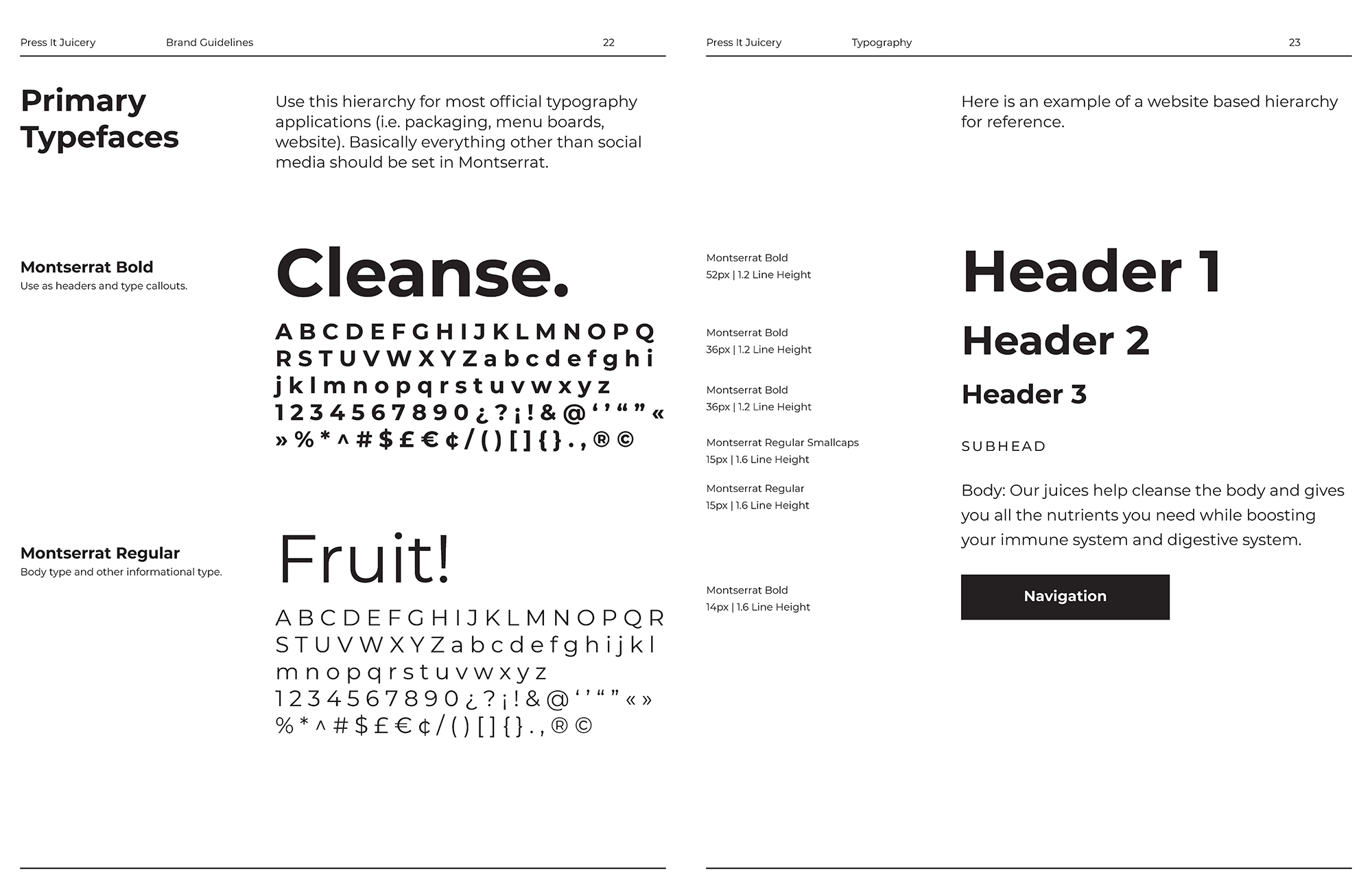
I made a change to the logo. To make the brand more approachable, I removed the heavy border surrounding the logo and let the logo breathe by itself. For small spaces, such as a favicon, I took the drop of juice from the logo and made that into a secondary logo mark.
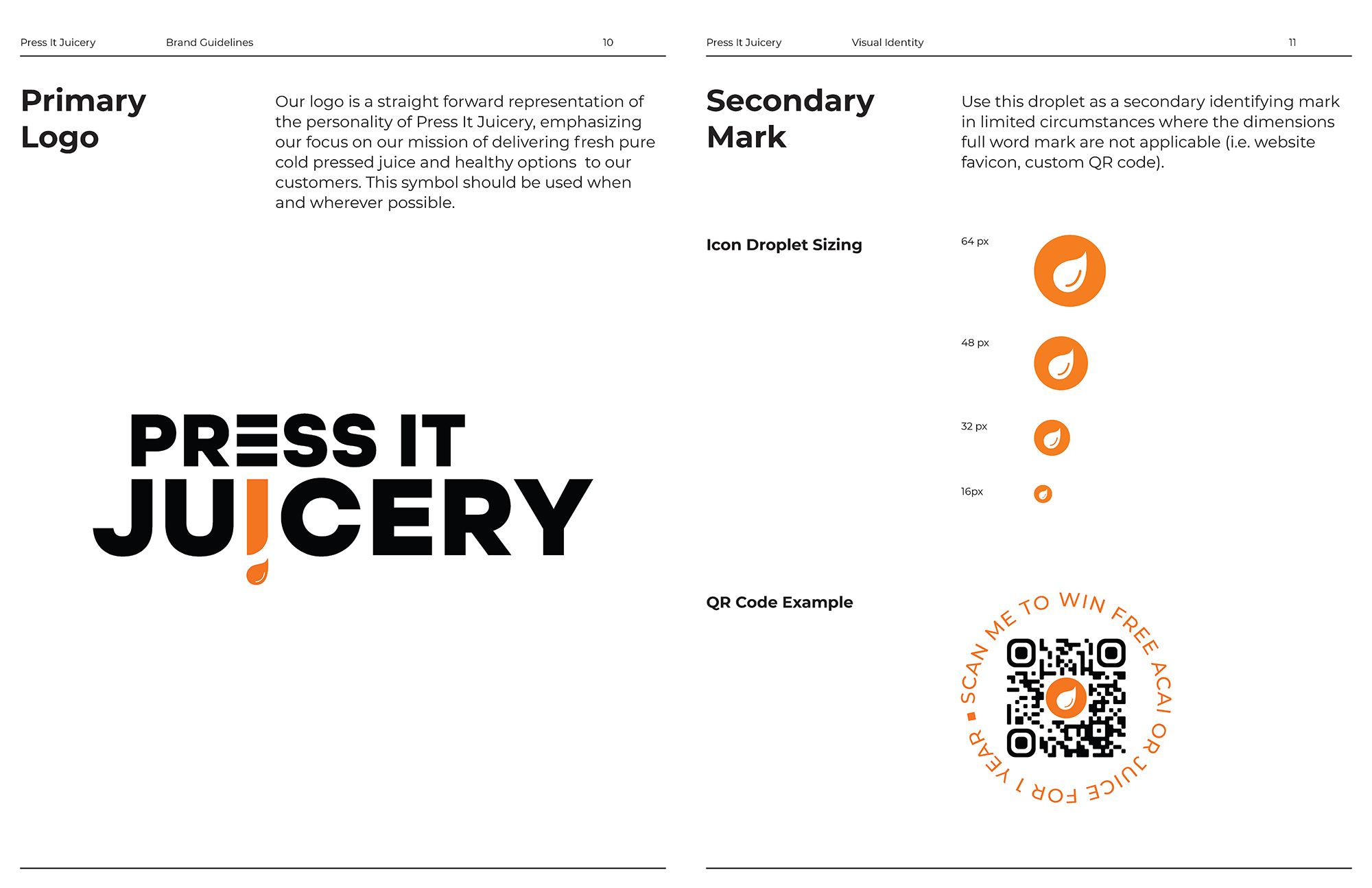
Changes to the Juice Selection
After the state of the store was stabilized, I worked with Josh to cut the total number of juices from 12 to 9 so that less fruit would need to be stocked, and the pressing process would be easier.
After these changes, and since the store was opening at consistent hours and juices were being pressed again, business picked up. The store was doing about $3000-5000 a week now.
Bowl Packaging
At this point, the goal was to grow the weekly sales. I saw that a difference between our bowls and competitors' bowls was the “postability” of the bowls. This was mainly caused by the lids of our acai bowls. The toppings on our acai bowls would get squeezed down underneath the lid and the presentation of our bowls would be ruined. Due to this, we were missing out on a lot of word of mouth marketing since not many people wanted to post our bowls onto their Snapchat or Instagram stories.
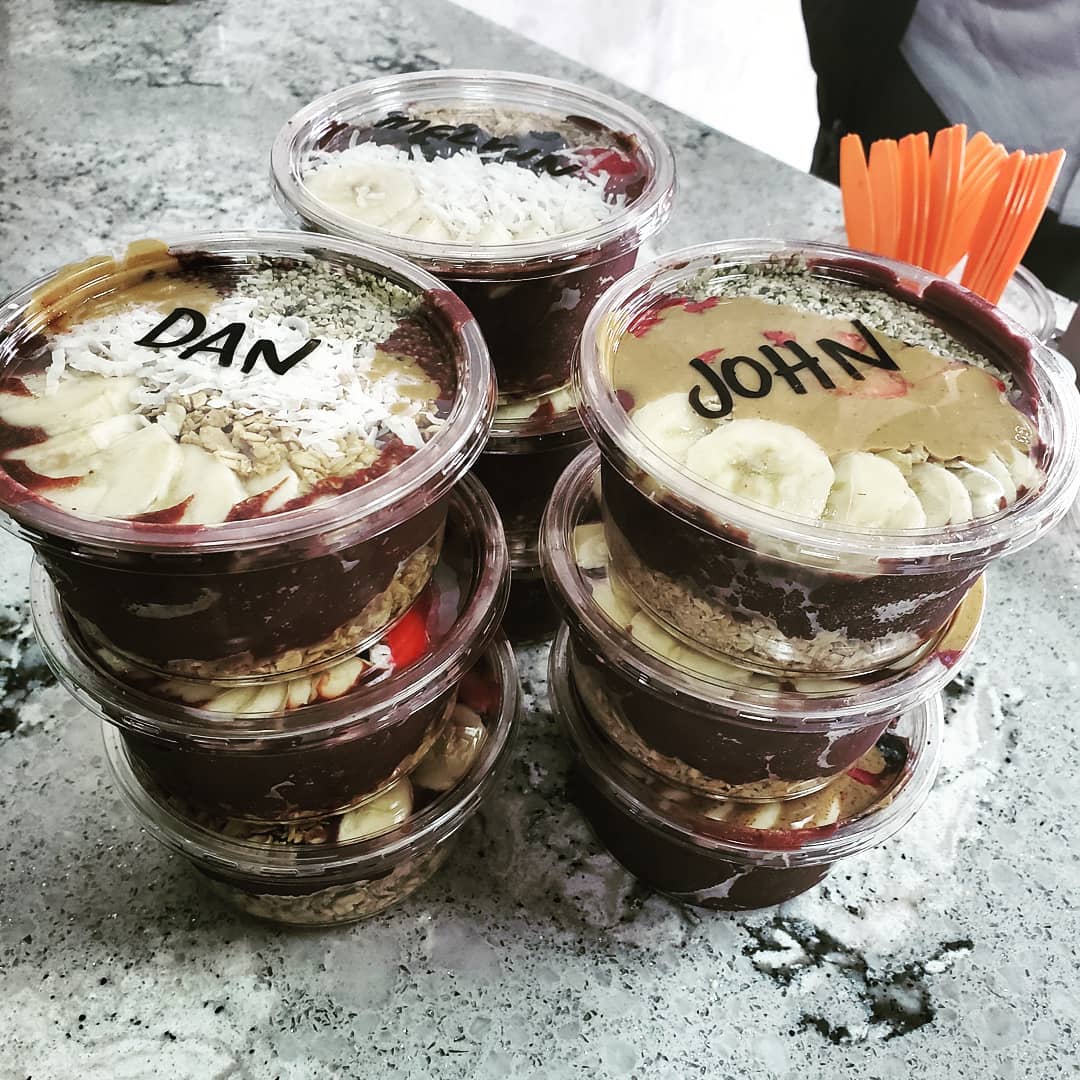
Dome Topped Bowls
To improve the presentation of the bowls, we decided to get domed top bowls. It ended up being around $0.70 per bowl as opposed to the $0.30 per bowl that the old takeout bowls were. The extra cost of the bowl ended up being really worth it as a week after the new bowl packaging, the shop was doing around $10,000 a week. There was also an immediate surge in social media posts of our bowls.
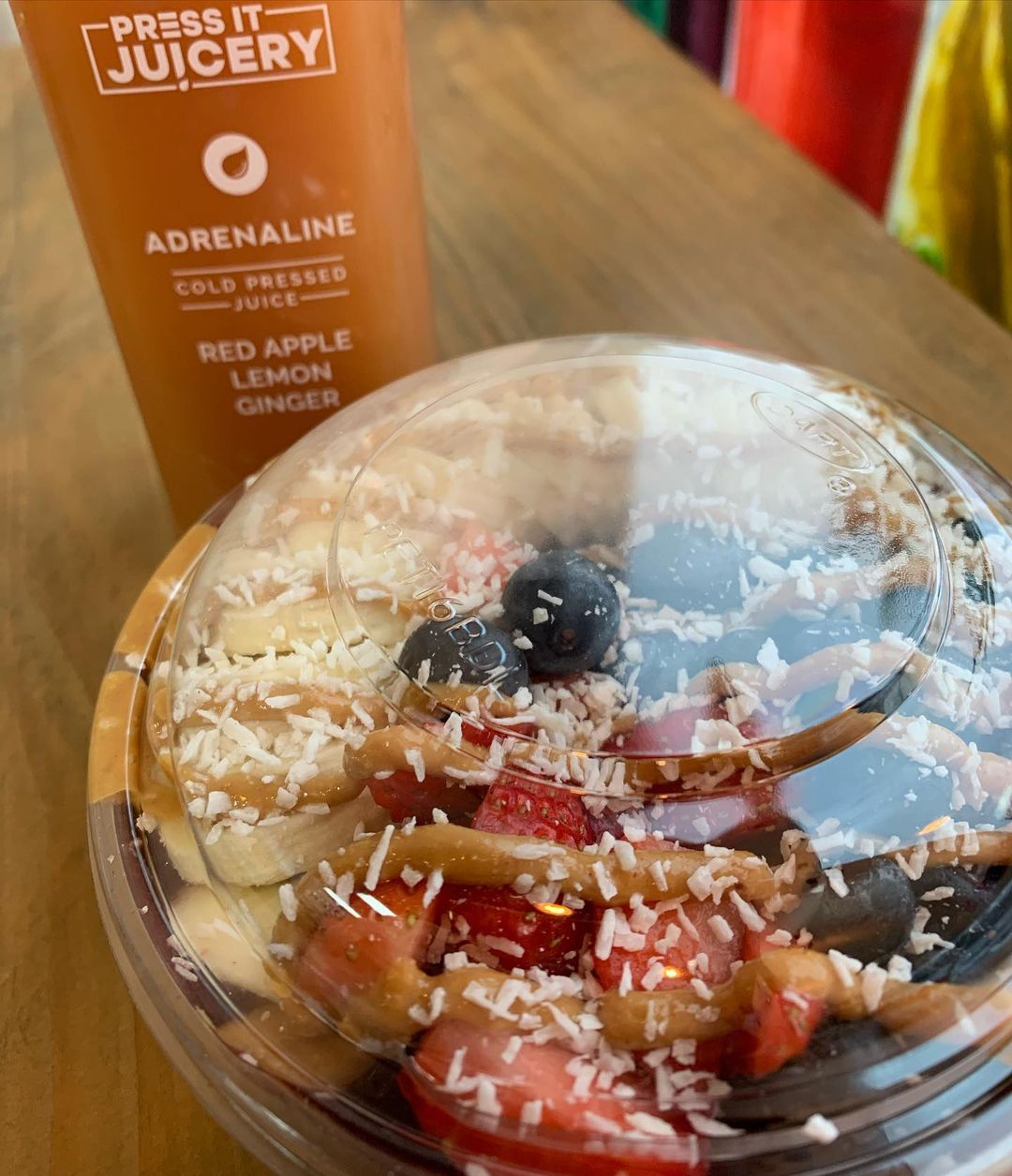
Print Collateral
During this time, I was asked to design some posters and stickers in the style of the new website.
Stickers
Posters
Staff Uniforms
As the store continued to grow in sales, Josh hired more staff for Press It Juicery. I was asked to create a handful of designs to go on staff uniforms. These uniforms are designed to be DTG printed with a print on demand company.
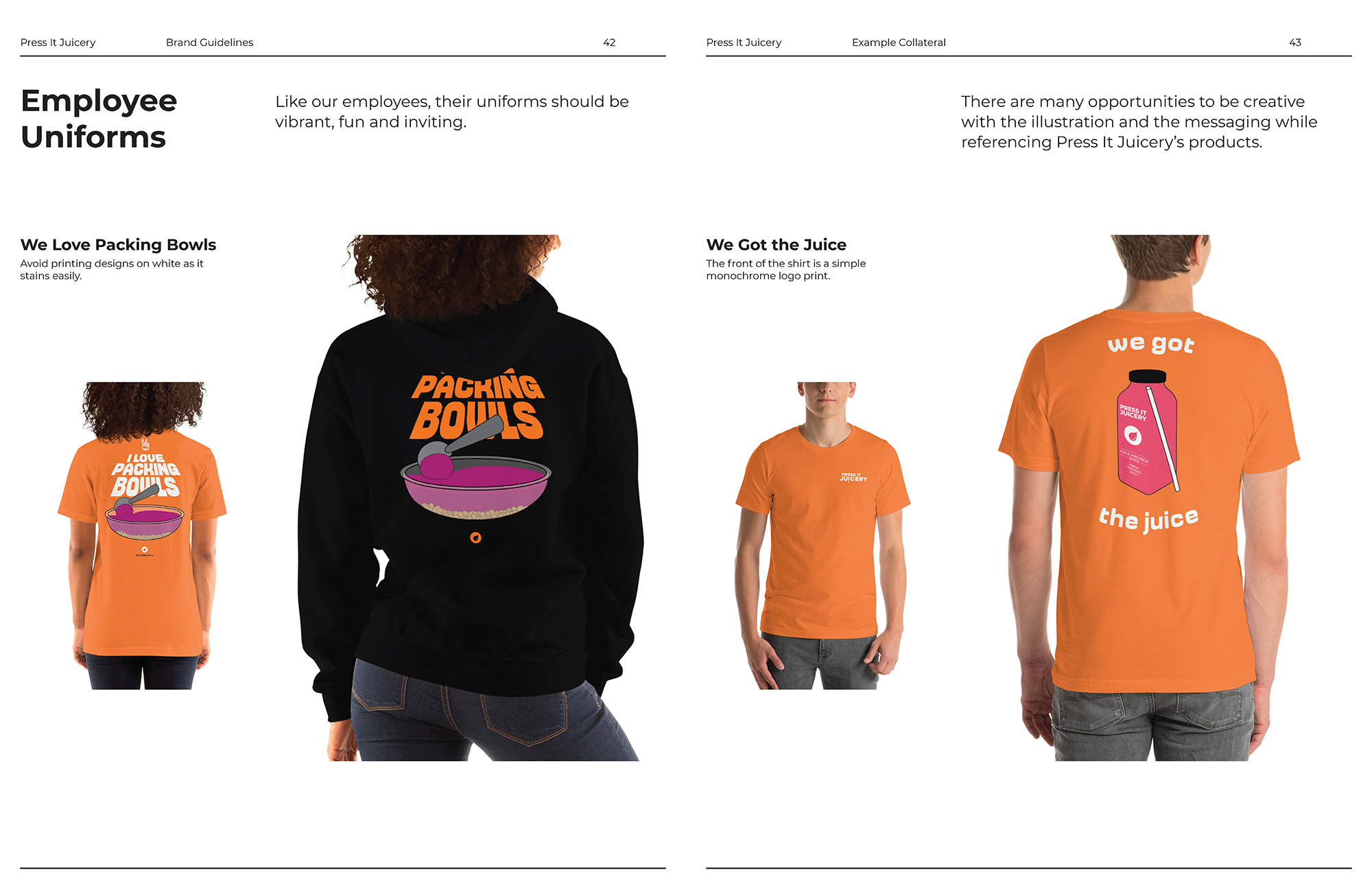
Social Media
With the increased engagement on Instagram, we decided to make some changes to the social media profile, and create some scheduled posts.
Icon Set
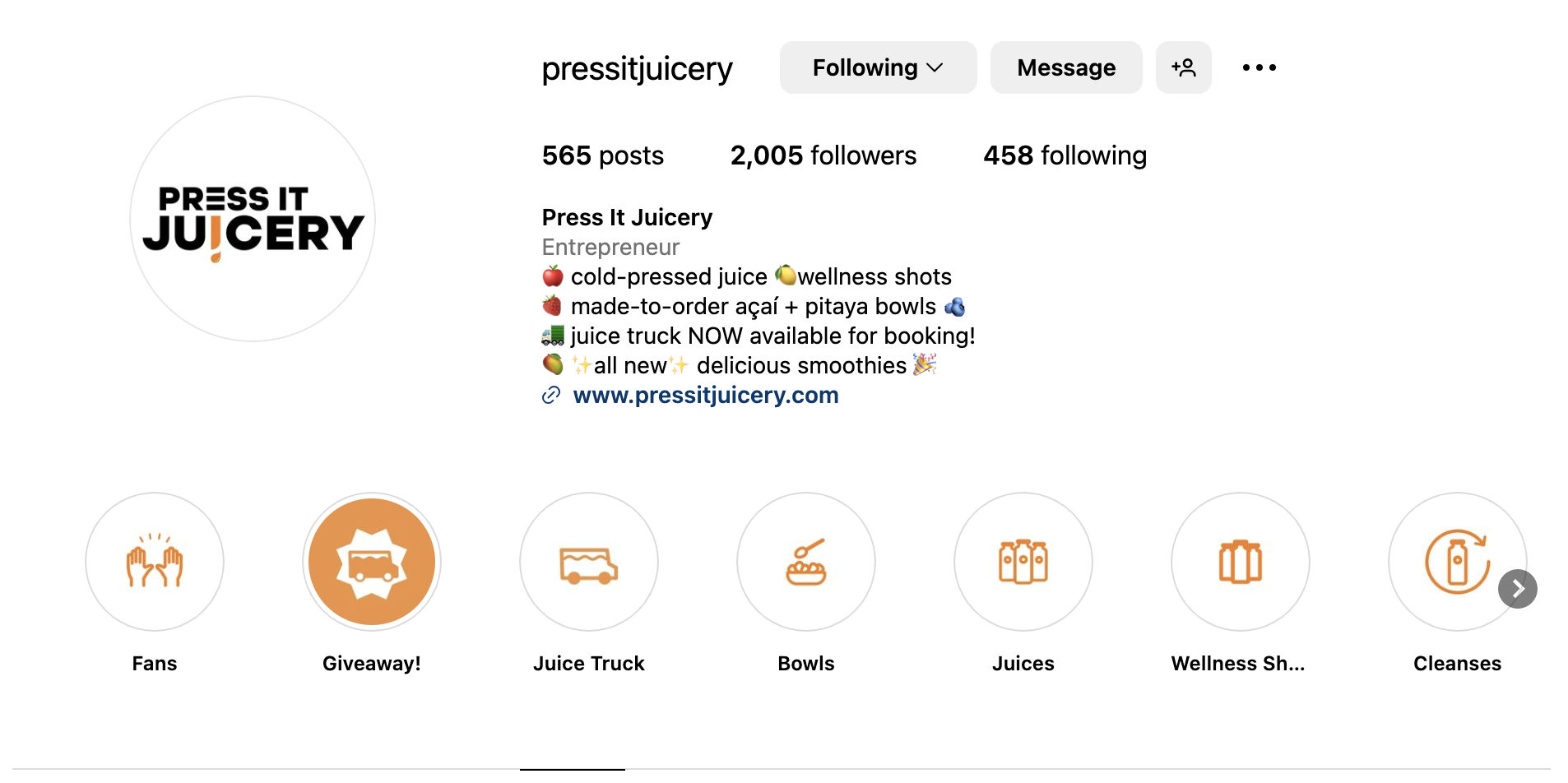
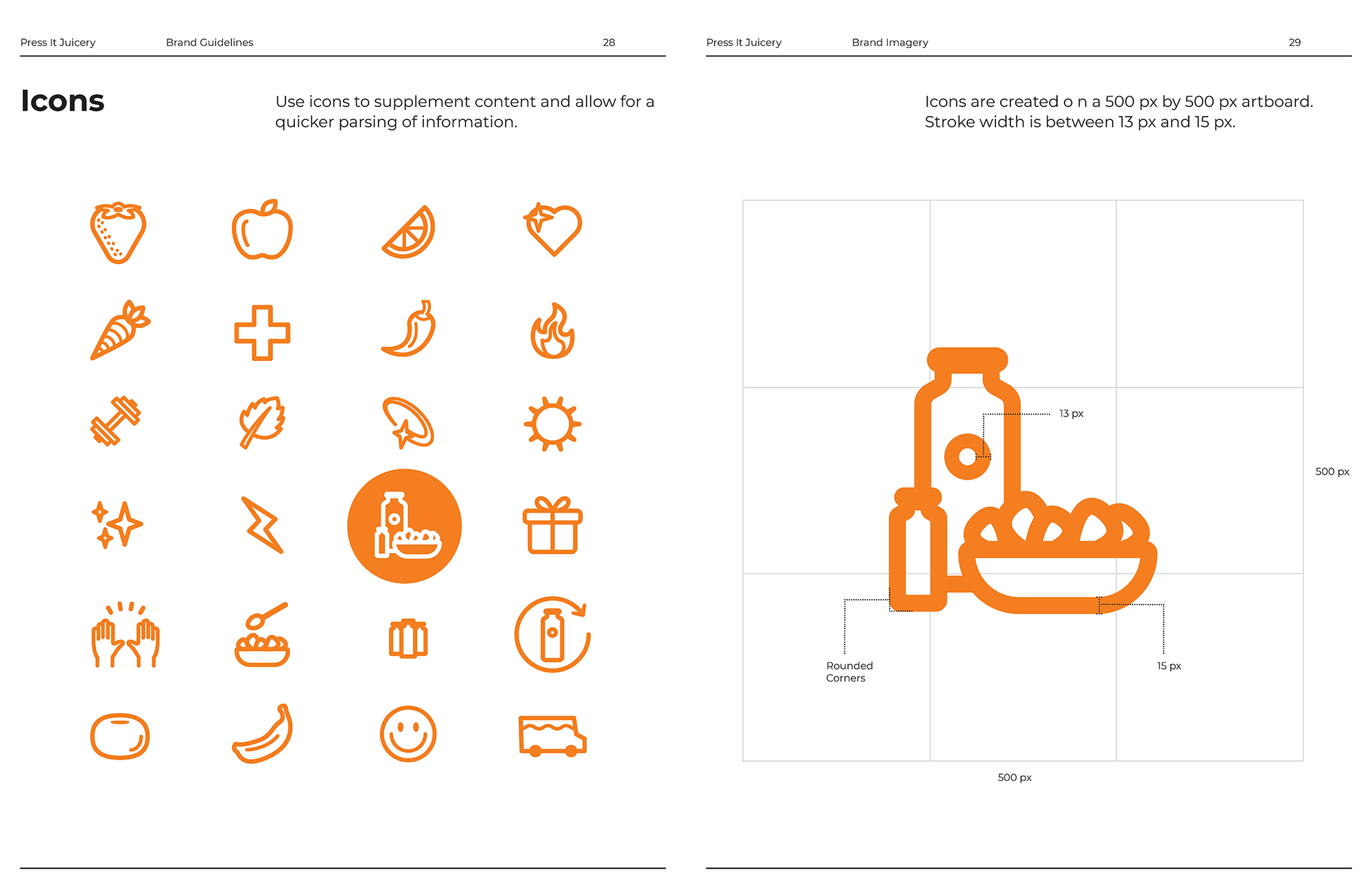
Social Content
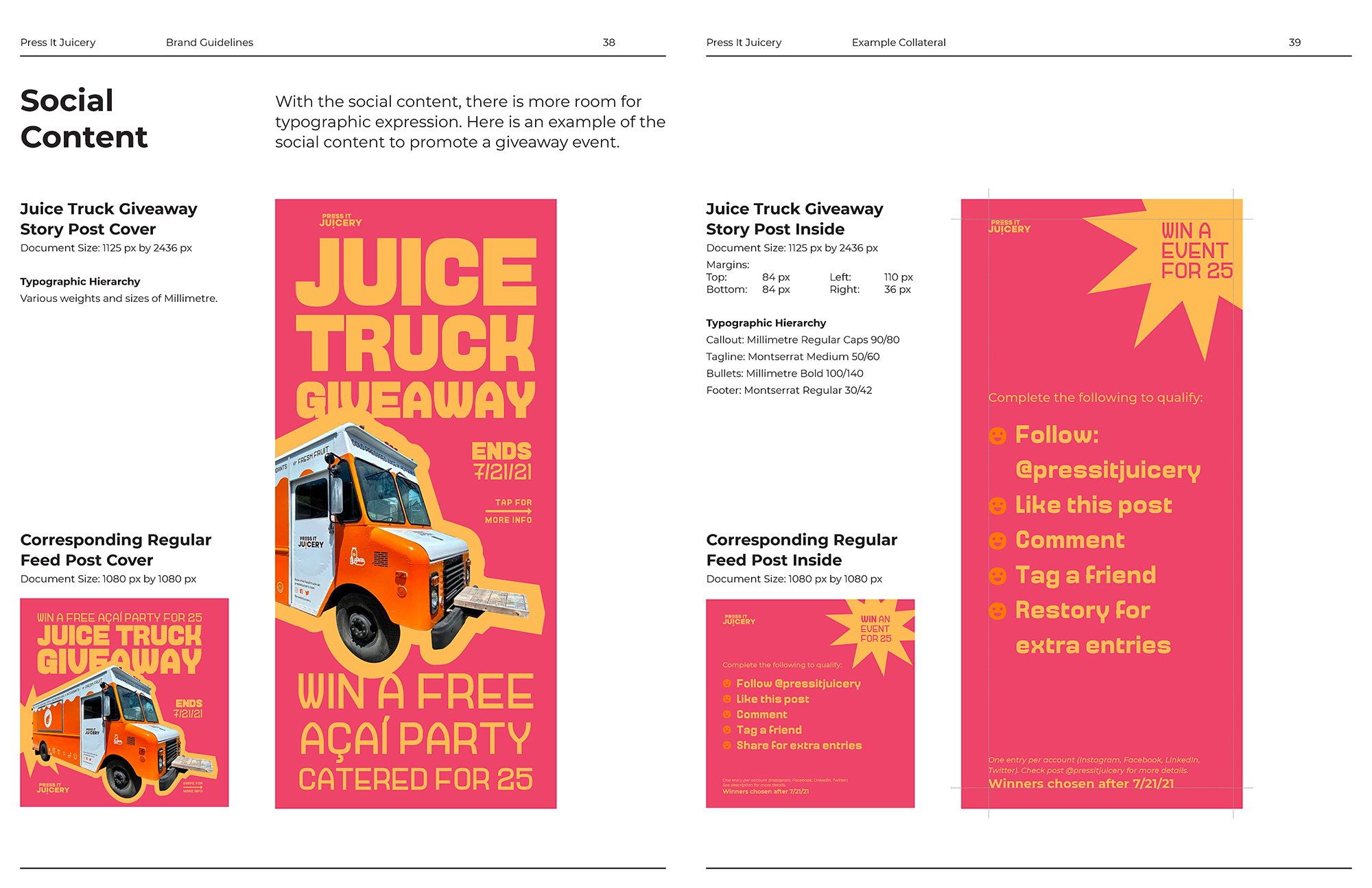
Digital Menu Boards
At this time we were experimenting with adding new menu items and topping choices, so in order to make the ordering process easier, and to reduce menu costs I was asked to create designs for a digital menu
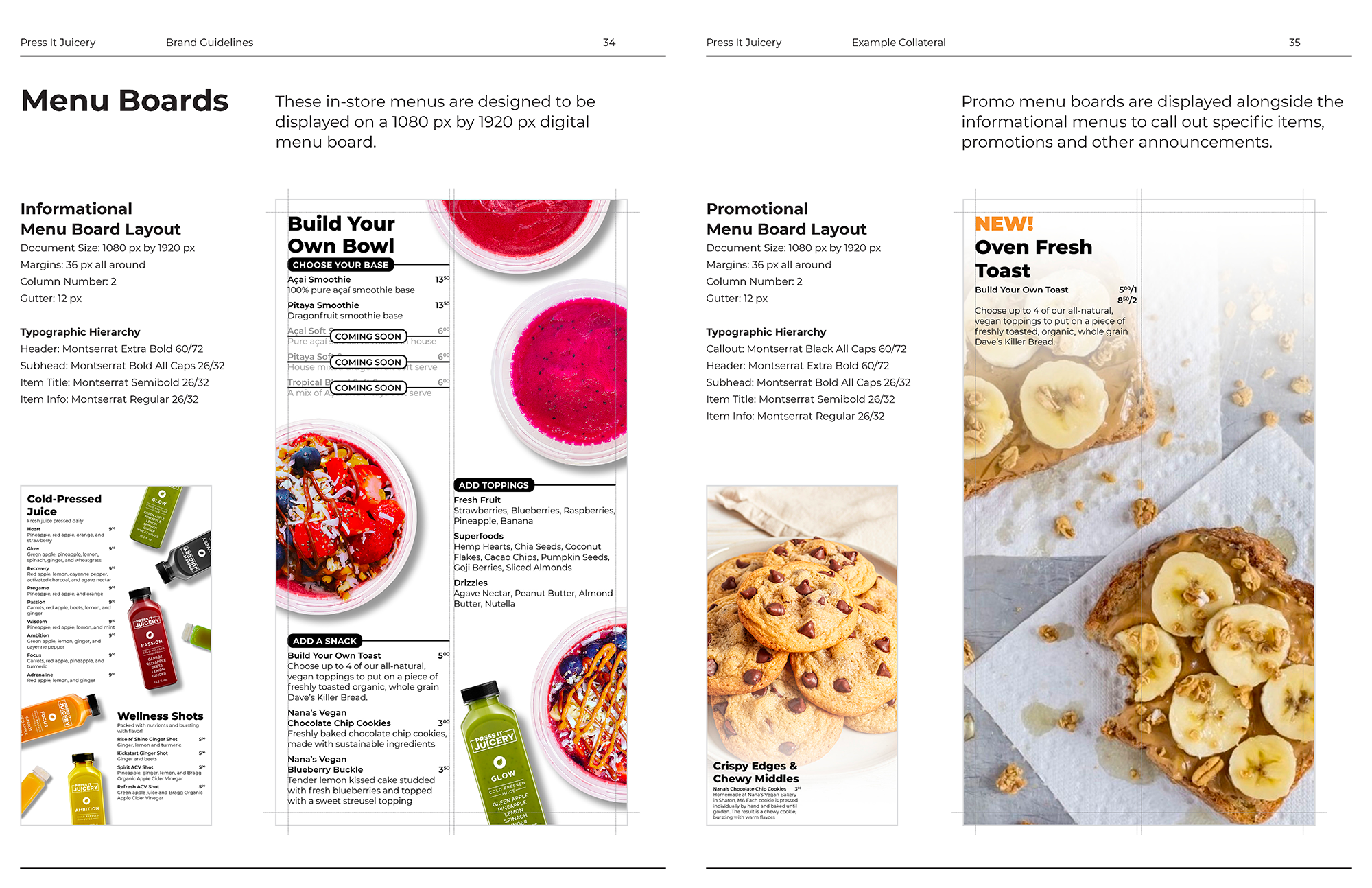
Juice Truck Wrap
With all of these changes in the store bringing the monthly revenue to around $35,000, Josh wanted to expand the operations of the store to a juice (food) truck. This would allow the juicery to cater events, and increase it's presence in the local area. I was asked to create a design for a wrap.
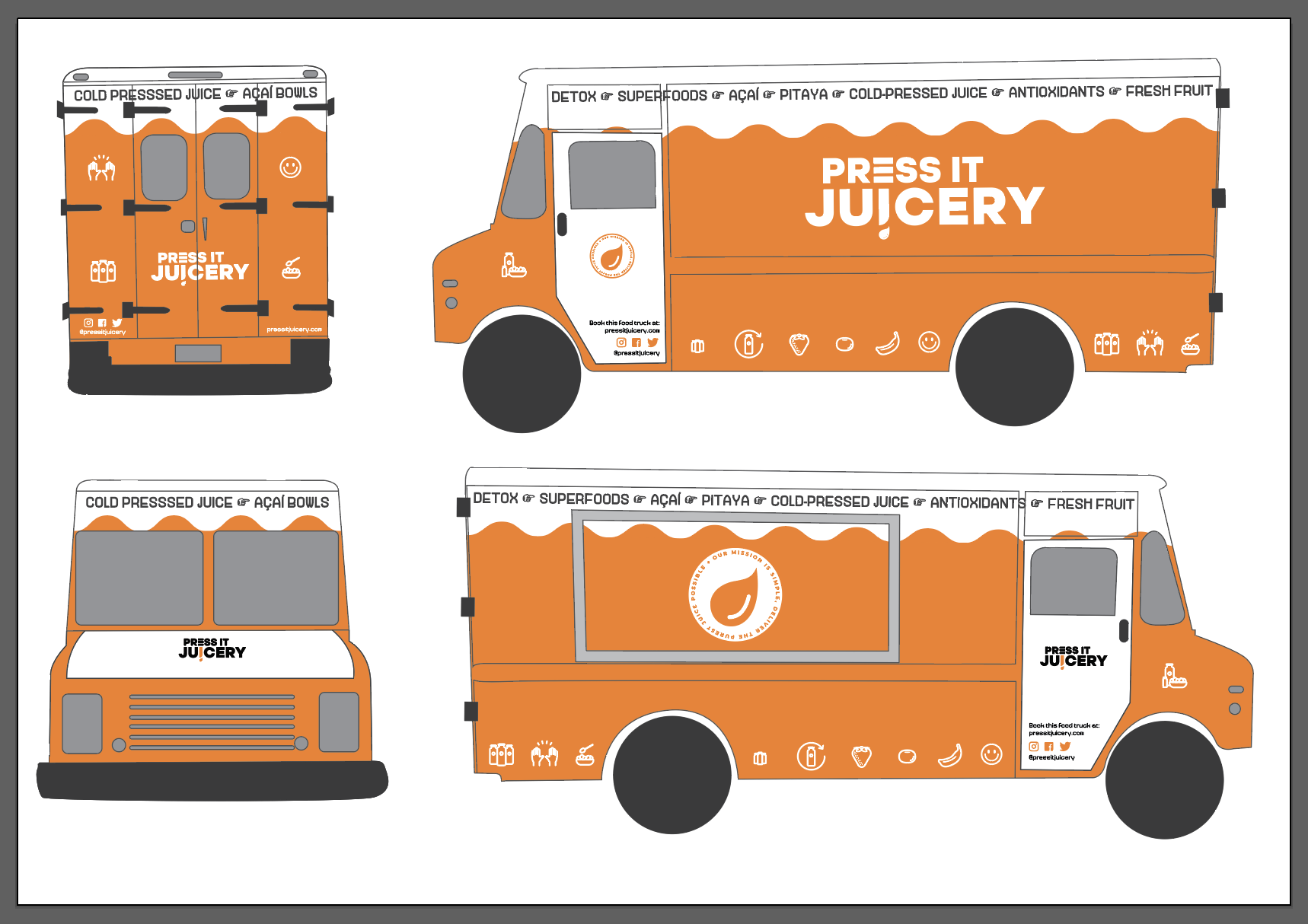
Reflection
The Power of Design
I was truly amazed by the transformative impact of the changes I implemented at Press It Juicery. Witnessing sales soar four to five times over simply by refining the presentation, rather than altering the product itself, was beyond my expectations. While I had learned the concepts in school, experiencing their tangible effects in real-life business operations was truly eye-opening. It highlighted the immense potential of thoughtful design and presentation strategies in driving substantial business growth.
Through my work at Press It Juicery, I transitioned from theoretical understanding to practical application in design strategy. Prior to this experience, my school-based design concepts often lacked real-world feasibility, particularly for small businesses. I used to believe that overhauling a brand required immediate and comprehensive changes, much like the approach taken by large corporations. However, I've come to realize that even those corporations follow a strategic rollout plan due to the cost and time constraints associated with rebranding. This hands-on experience has provided me with valuable insights into the importance of realistic implementation and strategic planning in design initiatives. It emphasized that not everything needs to be done at once; rather, it can be a gradual, strategic process, saving both time and money upfront while ensuring smoother transitions and optimal outcomes.
Running a Small Business
I've come to appreciate the immense challenges inherent in running a small business. Consistency is key, yet achieving this hinges greatly on the reliability of staff. According to Josh, staffing remains one of the toughest hurdles in the food services industry, and this concept likely echoes across other sectors as well. Understanding these trials and tribulations has deepened my empathy for entrepreneurs and underscored the indispensable role of a dedicated team in navigating the complexities of small business ownership."
